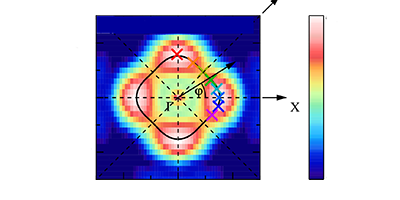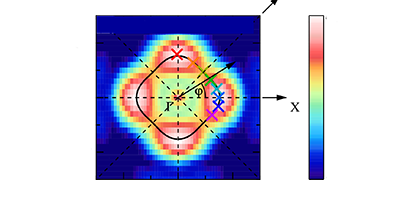Electron Pairing in Iron-Based Superconductors
The interaction that allows electrons in a superconductor to pair up and flow in a zero-resistance current differs from one family of superconductor to another—and in some cases, isn’t known. That’s the situation for the recently discovered family of iron-based superconductors: the symmetry of the superconducting energy gap (that is, how the width of the gap changes with electron momentum) is an indicator of the pairing mechanism, but the gap symmetry is not the same for all crystal structures. Adding to the lack of consensus, experiments reported in Physical Review Letters show that the gap in the iron-based superconductor is more anisotropic than previously thought. The findings put new constraints on any theoretical model of the pairing mechanism.
Angle-resolved photoemission spectroscopy (ARPES) is the most direct way to probe the energy and momentum of a material’s electrons. To date, ARPES has mostly revealed an isotropic gap in iron superconductors, which is consistent with electron pairing mediated by a combination of spin fluctuations and phonons. Conventional ARPES, however, is only sensitive to electrons near the surface, which may not represent those in the bulk of the material. Using an enhanced ARPES technique that is more sensitive to bulk electrons, Kozo Okazaki at the University of Tokyo, Japan, and colleagues have observed a pronounced gap anisotropy in : the gap is highest for electrons moving along the and axes of the material and lowest for those moving along the - diagonals. The gap’s shape suggests phonons aren’t likely to play a role in the pairing mechanism, but at least for this material, long-range magnetic interactions between the iron atoms should be taken into account. – Jessica Thomas





